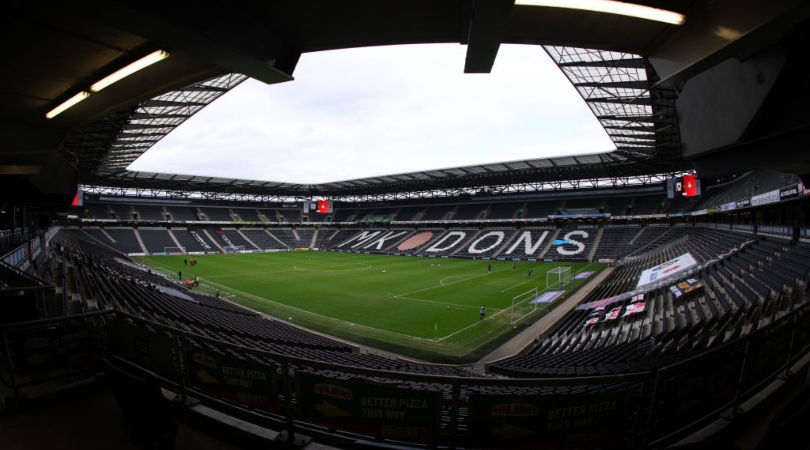
In 1967, the people at ITN travelled to a small, agricultural village in North Buckinghamshire called Milton Keynes. Home to 200 residents, the village and its surrounding areas had been designated to house a new town, a place to accommodate a post-war overspill of people needing new homes and a new life. A reporter, taking the opinions of those already living there, found a settled community, suspicious of change. “It’s the Londoners,” one woman said with a smile. “We just don’t like them.”
Fast forward over half a century and within that new town, in a 30,500-capacity multipurpose stadium, you can hear a chant. “No-one likes us, no-one likes us, we don’t care.”
A lot has happened between ITN’s visit and the present day, from city folk moving into a brand new town to a south London football club following suit. While the locals’ distrust of new neighbours has long since subsided, there remains plenty of scepticism around England’s most resented football club.
MK Dons: Exiting Wimbleon, pursued by a Womble
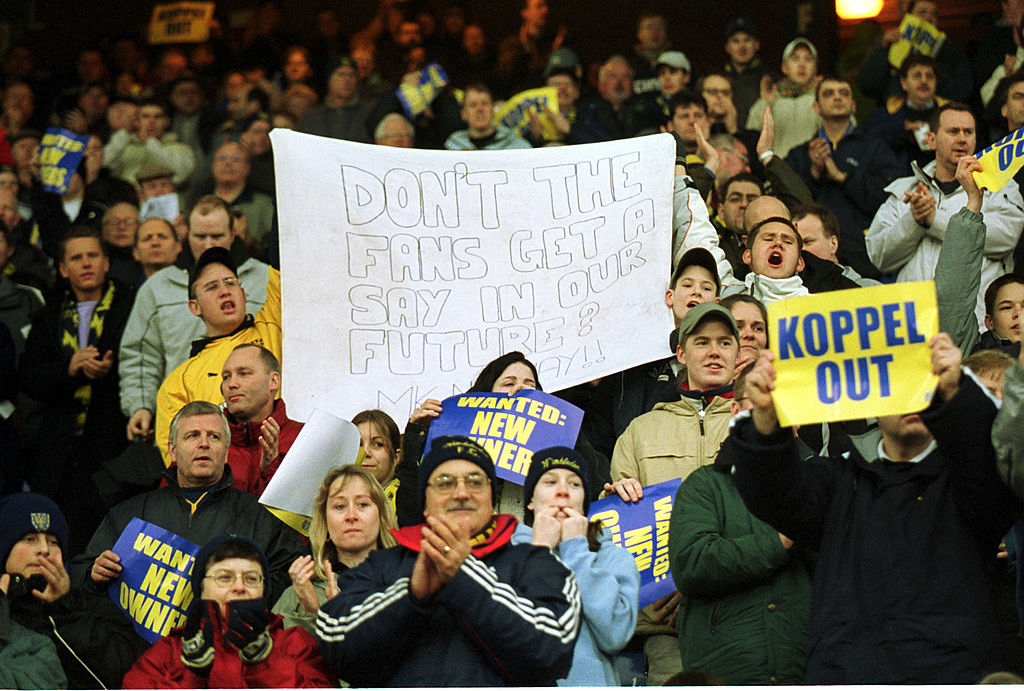
The final score was 2-1. In May 2002, following an FA arbitration meeting, a three-man independent commission gave their decision. Two of them voted positively, one voted against. Wimbledon FC would be allowed to move 60 miles north to Milton Keynes.
It was a moment that rocked English football. Pete Winkelman, a former music executive who’d lived in Milton Keynes since 1993, had been seeking a Football League club to find its place there. The town’s non-league club had been mooted, but Winkleman saw that route as too expensive a project. Luton were approached, QPR, Crystal Palace and Barnet too, but it was Wimbledon chairman Charles Koppel whose ears were most pricked by an idea he felt was the only way to save the club from financial oblivion.
Winkelman’s plans included a modern new stadium, but while a suitable temporary home was sought in Milton Keynes, the club remained at Selhurst Park for 2002/03, having played there for more than a decade. They finished 10th in the second tier that season, but angry Wimbledon fans boycotted and crowds dwindled. Even their mascot Wandle the Womble deserted them, after the Wombles brand refused to extend the licence.
The club had fallen into administration by the time Milton Keynes’ National Hockey Stadium was brought up to Football League standard to allow the move to happen in 2003, for the fifth home game of the new campaign. Wimbledon were bottom of the table by then, with just three points from eight league matches - only 1,054 people watched their last game at Selhurst Park against Wigan.
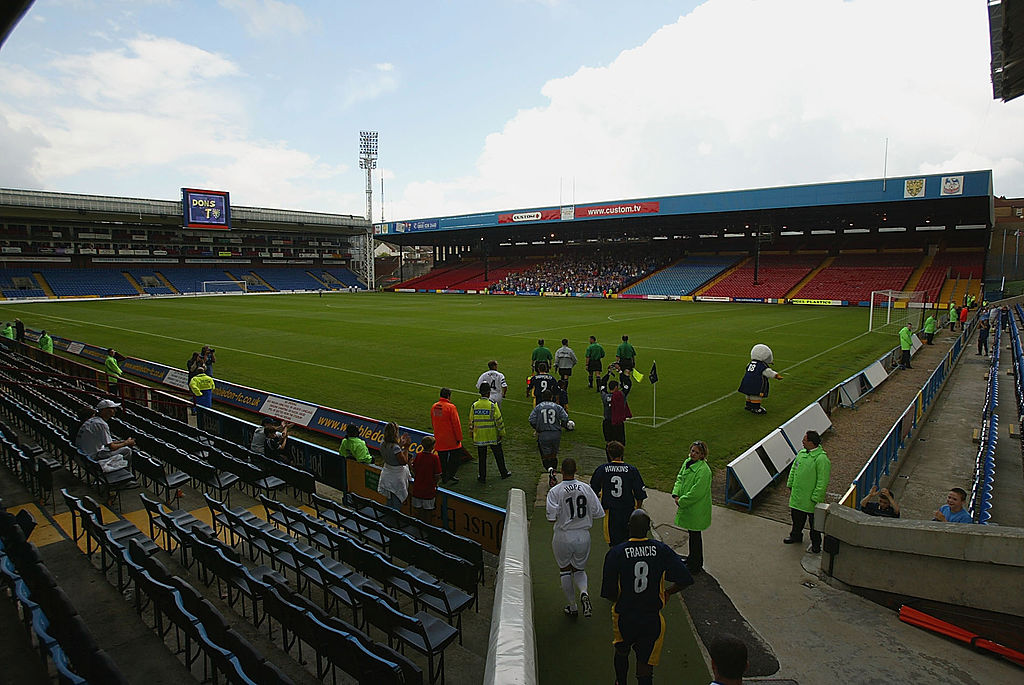
With an artificial pitch converted into grass and temporary stands erected, the yet-to-be renamed Wimbledon drew 2-2 with Burnley in their first game in Milton Keynes - a 34-year-old Dean Holdsworth and fellow forward Patrick Agyemang both finding the net, in front of 5,639 supporters.
That day, the Guardian’s first line of their match coverage read: “English football’s first exercise in franchising could not be less glamorous.” Among those at the game was Matt Lazenby, a Middlesex-based fan who’d followed Wimbledon since early childhood, watching the victorious 1988 FA Cup final again and again on VHS. Having grown up travelling to Plough Lane and then Selhurst Park, he felt inclined to continue to follow the club after the move.
“The experience was initially very uncomfortable, and I took very little pleasure from those early seasons,” Lazenby says. “It was a hockey stadium not built for football, very weird, but my team were playing there and I wanted to support them. Once the whistle blew, it could have been anywhere.
“It was strange, but what was noticeable fairly quickly was that there were 6,000 or even 8,000 people turning up watching this new thing in their town - you could immediately feel that there was a market for it, an audience for it, and that was something the club hadn’t had for 11 years or so.”
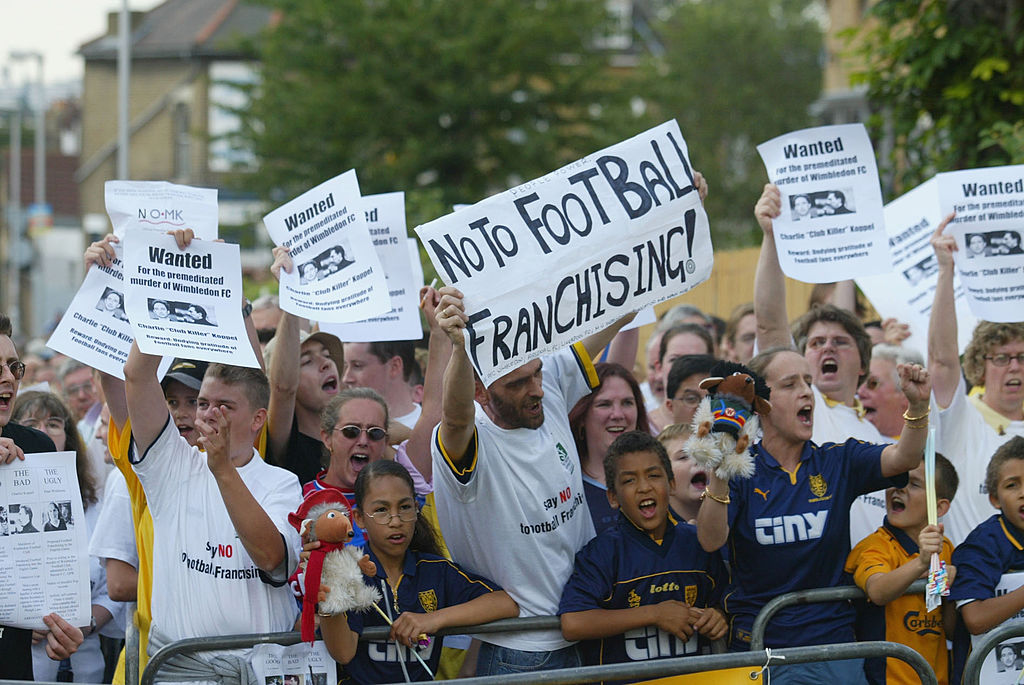
Administration still clouded the skies as Wimbledon finished bottom of the second tier, 22 points short of safety. They won only two of their 20 games in Milton Keynes that season.
It would be their last campaign as Wimbledon FC - in June 2004, Winkelman’s Inter MK group bought the club and renamed it MK Dons, with a new badge and a new white kit.
For Winkelman, what was needed, if his club was to be truly recognised, was a new stadium. Using financial assistance from Asda, who built a supermarket on adjacent land, the arena took impressive shape. “Nothing more than a property deal,” was how many fans saw it, but Winkleman was quick to push back. “People think it’s easy - you get an Asda and build a stadium like this,” he said. “We’ve done something extraordinary.”
MK Dons would spend three more seasons at the National Hockey Stadium before Stadium MK was ready to open - narrowly avoiding relegation to the fourth tier in 2004/05, before succumbing to the drop a year later. In 2006/07, they lost in the League Two play-offs.
For 2007/08, the town Winkelman once described as “the biggest place in the south east of England, outside of London” was able to boast one of the best stadiums in the country, which includes a hotel and not one but four video screens - a figure unmatched anywhere in England, until Tottenham Hotspur’s new arena was constructed.
“I remember the test event against Chelsea that summer,” says Toby Lock, an MK Dons fan who now covers the club’s matches for the MK Citizen. “It felt like we had a football club here and there was a huge change in mindset. Suddenly it didn’t feel out of place or temporary. We’d been called a plastic club, a fake club. We’d played for years in a half-built stadium designed for a completely different sport, but now here we were, in a beautiful place, and it was all ours.”
“Your ground’s too big for you”
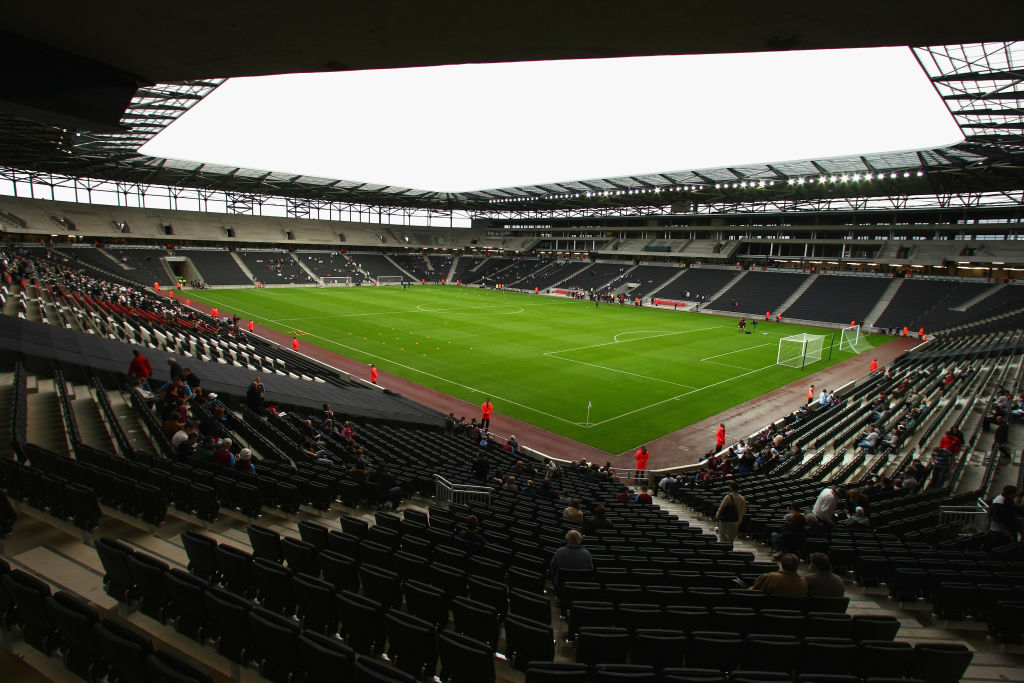
The club enjoyed its first success that season: with Paul Ince as manager, MK Dons won the Football League Trophy and were crowned League Two champions. Winkleman’s “project” had legs - the club’s academy began to bear fruit, most noticeably with the emergence of Dele Alli, sold to Tottenham for £5m in 2015, the year they also won their first promotion to the Championship.
Alli had been among the stars, with Will Grigg scoring twice, as MK Dons thrashed Manchester United 4-0 in the League Cup months earlier, in front of almost 27,000.
“Best night of my life, no doubt about it,” says 20-year-old Ollie Charnock, a lifelong MK Dons fan - now, the club have been in existence for long enough for people to genuinely say that. “I’ve never experienced something like it, and I don’t think I ever will again.”
The club averaged more than 13,000 in the Championship - the stadium also became a favoured location for other matches, hosting the 2014 FA Women’s Cup final, and four matches at the 2022 Women’s Euros.
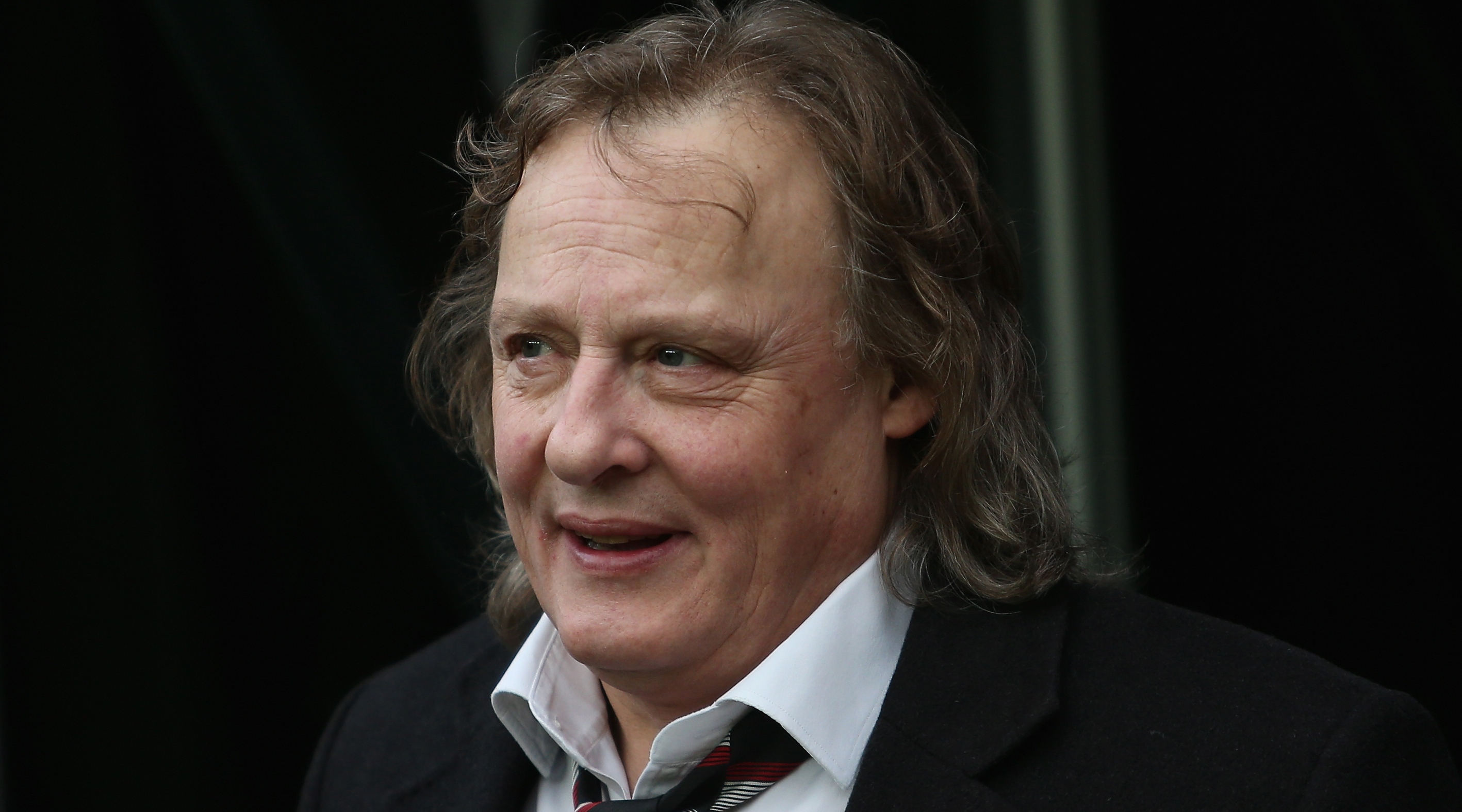
But MK Dons’ stay in the Championship was only a one-year adventure, before they were relegated back to League One. Since then, momentum has reversed. A drop into League Two lasted just one campaign, followed by promotion back to the third tier in 2019, but hopes of another rise to the Championship were dashed last year when they lost in the League One play-offs, then star men like Scott Twine and Harry Darling departed.
Without them, previously impressive boss Liam Manning struggled to get results in 2022/23, replaced by Mark Jackson mid-season, only for the replacement to be sacked himself this May, when the team were relegated to League Two again, the drop confirmed on the last day of the season at Burton Albion. Twenty years since their move to Milton Keynes, the club went into the 2023/24 season two divisions lower than when they started.
Attendances are short of what they were a few years ago - their average of 8,462 in 2022/23 was their lowest for any campaign at Stadium MK apart from the pandemic season and their League Two season, when crowds weren’t boosted by large away followings as often. Ipswich took more than 6,500 fans there in February 2023.
For matches with fewer away supporters, and the stadium less than a third full, atmosphere has sometimes been a struggle. Early Carabao Cup games were watched by less than 2,500; an EFL Trophy last 32 clash with Newport by just 635, meaning fewer than one in every 48 seats was occupied.
Atmosphere problems are something that fan Ollie Charnock acknowledges, but he insists there’s hope for the years to come. “The great thing is the majority of people who support this club now are under 25 - that has to be a massive positive for the future,” he explains. “A lot of the fans before us perhaps came out of interest and supported another club, and us younger lot were almost outsiders. We came with new ideas about singing sections and songs - while the atmosphere still needs working on, there’s a youthful presence.”
Whatever the age of those who watch football there, they’ve all had to listen to a consistent level of hate from supporters of other clubs, who continue to see them as a bastardised version of Frankenstein’s monster. Notions of a franchise simply won’t wash in the English game. “You can’t change opinions, even after 20 years,” Charnock says. “The hatred against us is strong, and we get it from everyone. ‘Your ground’s too big for you’ and other songs about the ‘franchise’ are always there, but we embrace it. ‘No one likes us, we don’t care’ is our comeback.”
The old Millwall call to arms might seem out of place in leafy Buckinghamshire, but the fans at MK Dons have created an us against them mentality that they stand behind. “We’re as hated as Millwall have ever been, but that creates a togetherness,” Lazenby says. “Every MK Dons fan gets into arguments with other fans about the decisions they’ve made. There’s a very loyal fanbase, galvanised by the ridicule and the disbelief from other fans, who can’t understand that we’re genuine fans of our club.”
The wait for the frenzy
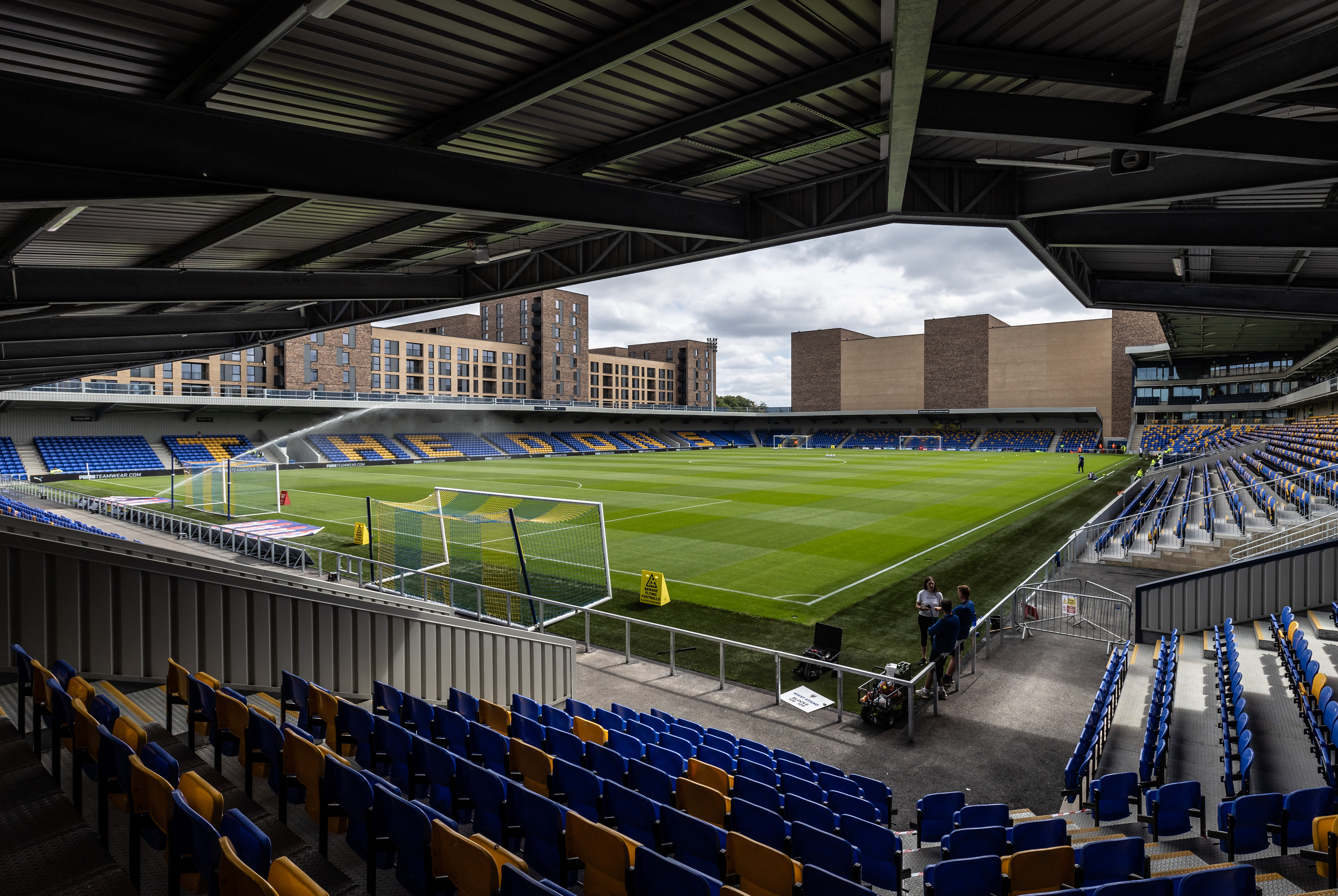
To this day, fans at AFC Wimbledon, the club that rose from the ashes of Winkelman’s fire, would take issue with “genuine” and “our club” - there’s a enmity that remains uniquely bitter. Just trying to get an AFC Wimbledon supporter to talk to FourFourTwo for this feature was hard - many still refuse to acknowledge MK Dons’ presence at all. “I try to stay away from the word rivalry,” says Gary Jordan, supporter and author of Show Me The Way to Plough Lane: The Remarkable Story of Wimbledon FC’s Return Home. “It’s a club we don’t recognise. It shouldn’t be in existence.”
The two teams were back in the same league in 2023/24, after AFC Wimbledon’s relegation in 2022, then a disappointing 21st-placed finish in the fourth tier. Lazenby, having experienced the final seasons of Wimbledon before making the transition to support a team in Milton Keynes, still takes firm issue with the notion that MK Dons are the bad guys. “The move to Selhurst Park was the death knell,” he says. “Wimbledon had no ability to make revenue other than selling players. What followed was relegation and crowds stopped coming.
“I remember going to Sheffield United away in 2002. There were so few away fans that they closed the away end and put us in a box. An executive box. That says it all. It was me, a few others, and our goalkeeper Kelvin Davis’ mum. We had no fanbase.
“I 100 per cent get that if I’d been a local south west Londoner, used to walking through Wimbledon to Plough Lane, I would have been seriously disgruntled. Ever since the move though, there’s been a one-sided media agenda in favour of AFC over MK Dons. Look at the FA Cup. Every year, AFC are talked about as having won it in 1988. Well, they didn’t. MK Dons did. I resent that we had to renounce those titles.
“Don’t get me wrong, I don’t want to see what happened to Wimbledon happen again. It must not be a precedent, but the way it’s been viewed, the angels and demons created off the back of it, it’s all wrong.”
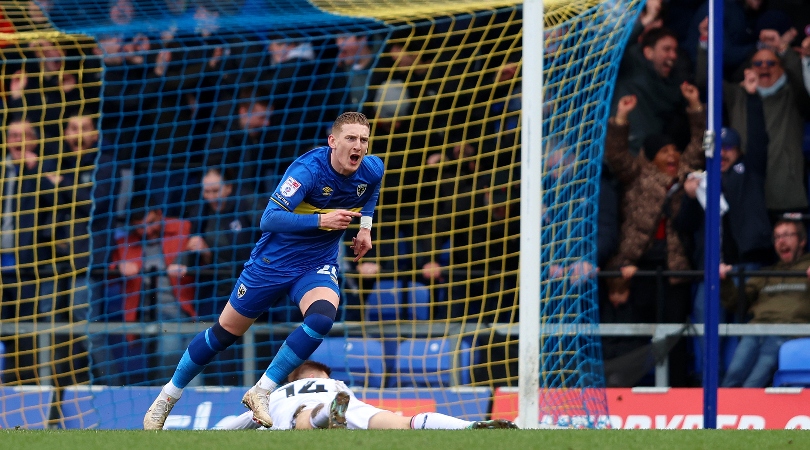
Wimbledon fans argue that they only stopped attending matches after the FA panel confirmed the move in 2002 - fans like Gary Jordan believe that, when it comes to MK Dons, time has proven them right. “It’s a great stadium up there, but they got it wrong,” he says. “You only have to look at their attendances now and how much of a large catchment area they have, and you can see it hasn’t worked. Winkelman called it a ‘Frenzy of football waiting to happen’, but they were sold a dream that just isn’t going to happen.”
Suggestions that the relocation hasn’t worked don’t sit well with those who attend Stadium MK week in, week out. “The biggest disappointment in my football life is watching this team fail to live up to the infrastructure built around it,” Lazenby says. “It’s far from a failure, though. We’ve been told for 20 years by other fans that football is all about history - that we have no history, so how could I support them? Twenty years is too short a time to try to claim a history, too short a time to deem this project a failure.”
Like most clubs, fortunes on the pitch fluctuate. In a lot of other way though, MK Dons aren’t like most club - they continue to strive to pour cement around their unsteady foundations. Is it working? “Yes, the club are very much a part of the town now,” says Toby Lock. “They do work in schools and the community. There’s a leisure complex too, which makes it a focal point for that part of town. It’s taken time and a lot of infrastructure but there’s a cinema, shopping, a McDonald’s and a KFC. While some might laugh at that, it’s important to how the town sees the club - it’s how modern clubs have to get along. Clubs down the pyramid have to look into new revenue streams to help build the football side of things.”
Two decades on, MK Dons remain a club striving to be something. They face ridicule wherever they go, but for young fans such as Ollie Charnock, who only know them as their team, supporting them is the same as any other. “It’s a great club, it’s my club,” he says. “I’m so grateful that there’s a club near my home that I can go and watch - like a lot of my generation, I didn’t want to be merely an armchair fan. We have lots of downs, but who knows what is around the corner. Make my dreams come true.”
So far, that hasn’t entirely happened, at least not in the way that Winkelman probably hoped back in 2003. The plan was never for MK Dons to be in League Two in 2023 - where they are another 20 years from now will do plenty to define the success or failure of the franchise. Today, just like that FA panel back in 2002, opinion remains divided.







